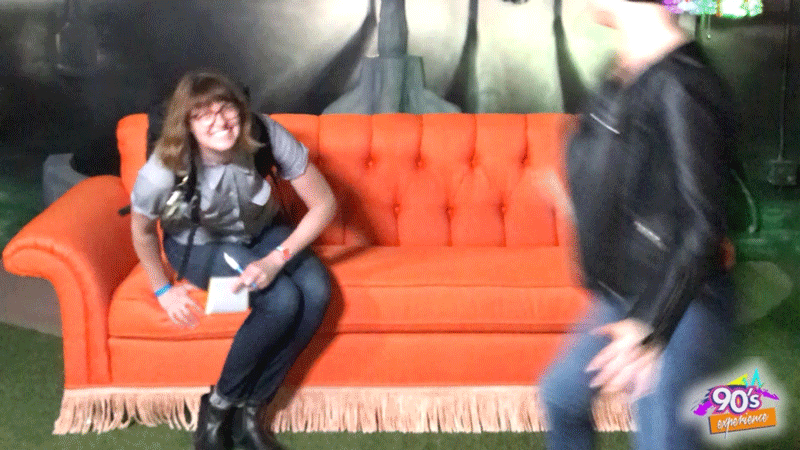There are limited “experiences” to be had in “The 90’s Experience,” the latest contender in the Instagram-fodder-as-pop-up-museum trend which opened last weekend in Oakland’s Jack London Square. In fact, there is pretty much one experience: photographing yourself and your friends against various digitally printed vinyl backgrounds meant to evoke “iconic” moments in the decade’s pop culture.
This may sound attractive to some. But in every permutation of the imagination, every possible arrangement of hand-on-hip or head-in-hands or twist-of-the-neck-with-open-mouth-and-peace-sign, this experience is simply not worth the $32 price of admission.
Let’s look at other “experiences” that offer up what ultimately amounts to photo opportunities for their attendees to share on social media. The Color Factory, a “collaborative interactive exhibit,” debuted in August 2017 in San Francisco for $32 a ticket. It was sold out for its entire eight months on Sutter Street, reopening in New York City where tickets are now $38 a pop. And the Museum of Ice Cream currently holds court at the corner of O’Farrell and Grant, where it offers “an experiential installation inspired by ice cream.” Entrance is $38 a person.
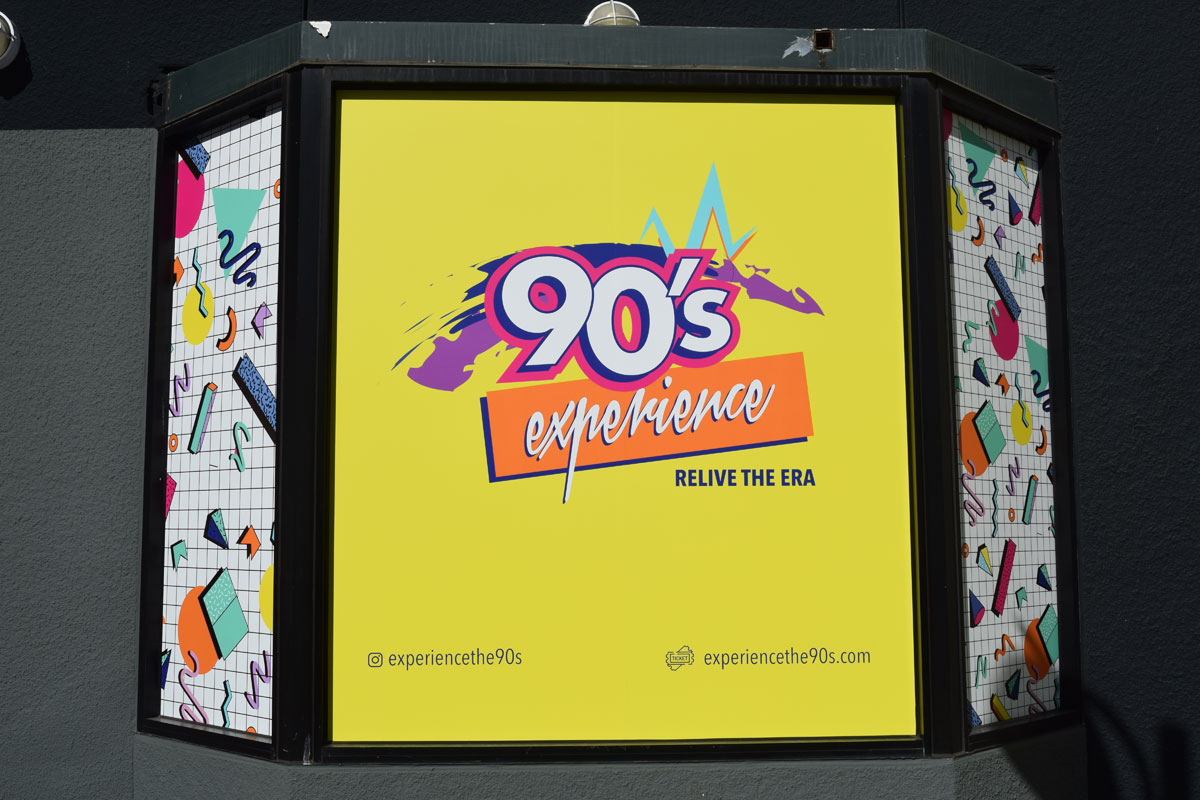
I bring up these prices to establish the market rate for Instagram traps, which the creators of “The 90’s Experience” likely studied. The success of these “experiences,” or at least their proliferation, seems to suggest that there is an eager audience for lightly themed, candy-colored selfie spaces.
But what “The 90’s Experience” makes clear is that it’s not as easy to create an “experience” as it is to double-tap one. Though I’m loathe to hold up the Color Factory and the Museum of Ice Cream as places worth over $30 of your hard-earned money, they do provide at least a modicum of in-person sensory stimulation before you translate that moment into a flat digital image for the purposes of feeding some tech giant’s understanding of you and your demographic.
I wouldn’t compare “The 90’s Experience” to the Color Factory and the Museum of Ice Cream if one of the five local organizers, Ky Truong, hadn’t mentioned those operations himself during preview night festivities for media, collaborators and Instagram influencers. Truong says those other “experiences” are too general, and with this pop-up effort he and his co-producers want to create something more specific, more nostalgic.
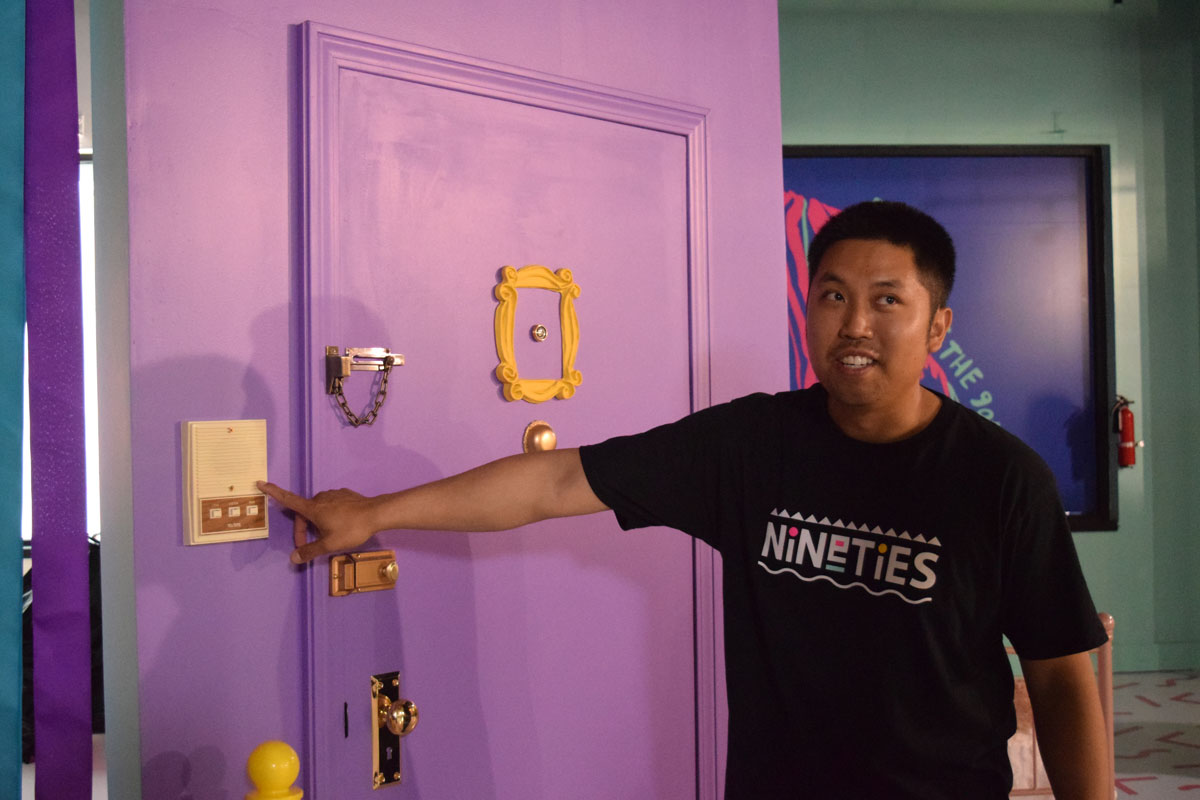
“Bathing all five senses,” is how “The 90’s Experience” describes itself on its website.
The closest “The 90’s Experience” gets to an actual activity is the zone featuring giant “The 90’s Experience”-branded markers that you’re encouraged to sniff. On opening night, I couldn’t smell anything special on their fuzzy tips. The pens do not hold ink, of course, so after sniffing, the only thing left to do is to pose against a vinyl backdrop decorated with the approximations of doodles you might once have made in the 90s (yes, there are several “Stussy esses”).
Did “The 90’s Experience” unlock the nostalgia vault for me, as Truong hoped? By all reasoning I should be a member of its prime audience: I remember the 90s well as formative grade school and middle school years. And surely, across the self-proclaimed 6,000-square-foot space with 12 interactive rooms (this is a stretch, as most of the themed spaces inside the Jack London Square storefront are one to two walls, if any) there should have been something to stir my feelings.
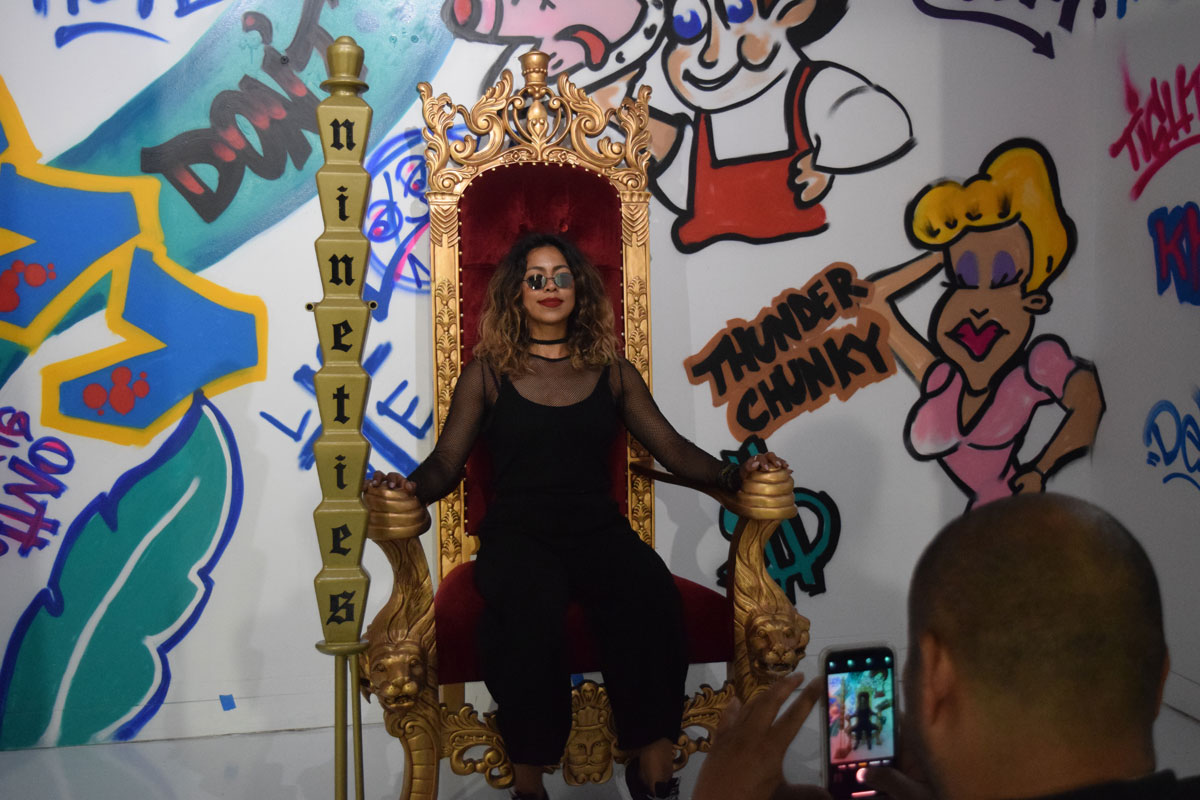
But despite organizers’ best efforts at what appeared to be Googling “the 90s”—a Friends door, a Nevermind photo op (floating money, check!), a column half-covered in pogs, a Fresh Prince throne, a giant plastic beeper (solid, no buttons to press), a wall adorned in CDs and a Mario Bros. tableau—the pangs of nostalgia stayed firmly behind lock and key.
In one corner, the set decoration (because let’s face it, the vinyl-covered surfaces are really just a series of backdrops) makes an attempt at Oakland specificity. On a faux-brick wall, concert flyers advertise Spring Jam on the Green, a 1993 concert in Jack London Square, and a Salt-n-Pepa concert at the Henry J. Kaiser Arena. One problem: the Salt-n-Pepa flyer is from 1987.
Beside these is what looks like a newspaper story on the 1992 Los Angeles riots, but upon further investigation reveals itself to be a Los Angeles Daily News article written to commemorate the 20th anniversary of the events, complete with a QR code. The paper is from 2012.
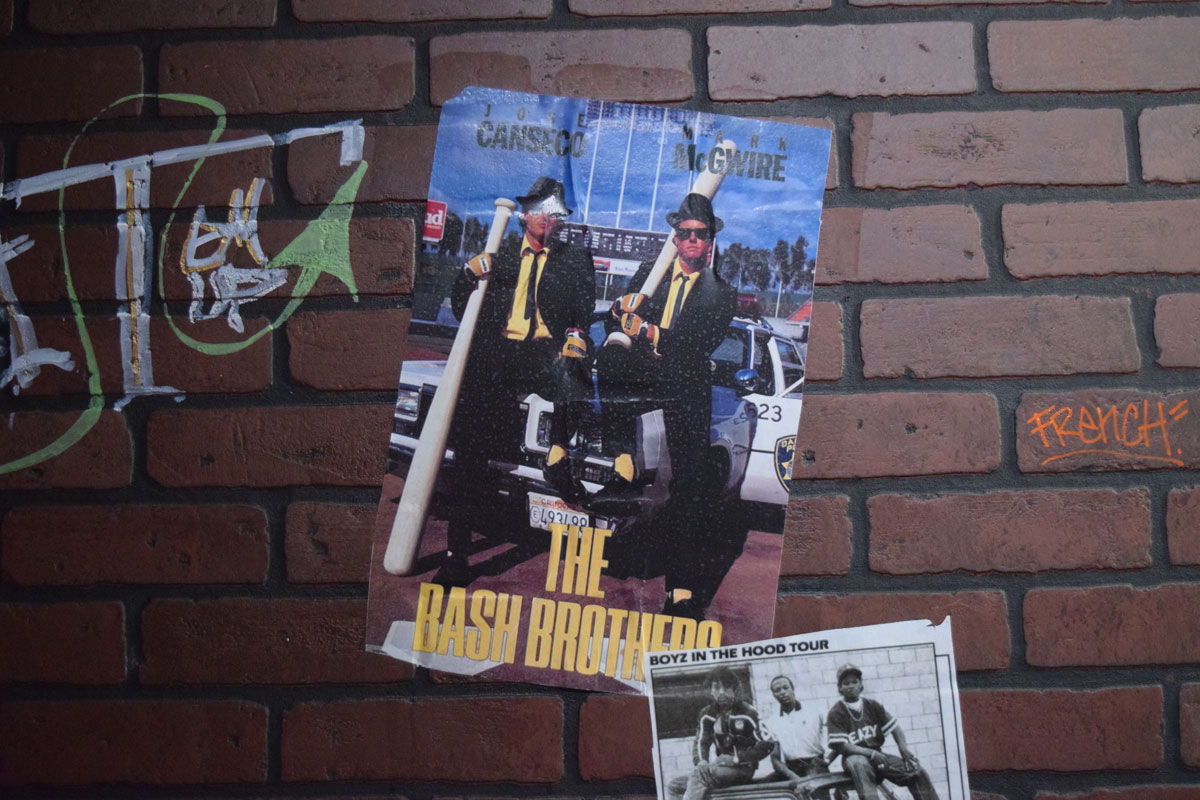
Other concert posters advertise events in New York and Ohio; this wall is nowhere and from no time—except possibly inside a casual, hurried gesture at the 1990s, made in 2019. (Disappointingly, the oversized gold plastic payphone at the end of this wall emits no sound through its earpiece, nor do its buttons actually move—a fact I discovered when I pushed the entire thing off balance with my index finger on the 9.)
Does “The 90’s Experience” actually teach us anything about life in the 90s? The timeline just inside its entryway is dotted with movie, album and product releases; their descriptions read as hastily cribbed copy from Wikipedia. (Can TLC’s “Waterfalls” really be summed up by explaining away the lyrics as “don’t go chasing intangible dreams without expecting consequences”?) That 2012 article is the closest we get to any historical or political information about the decade.
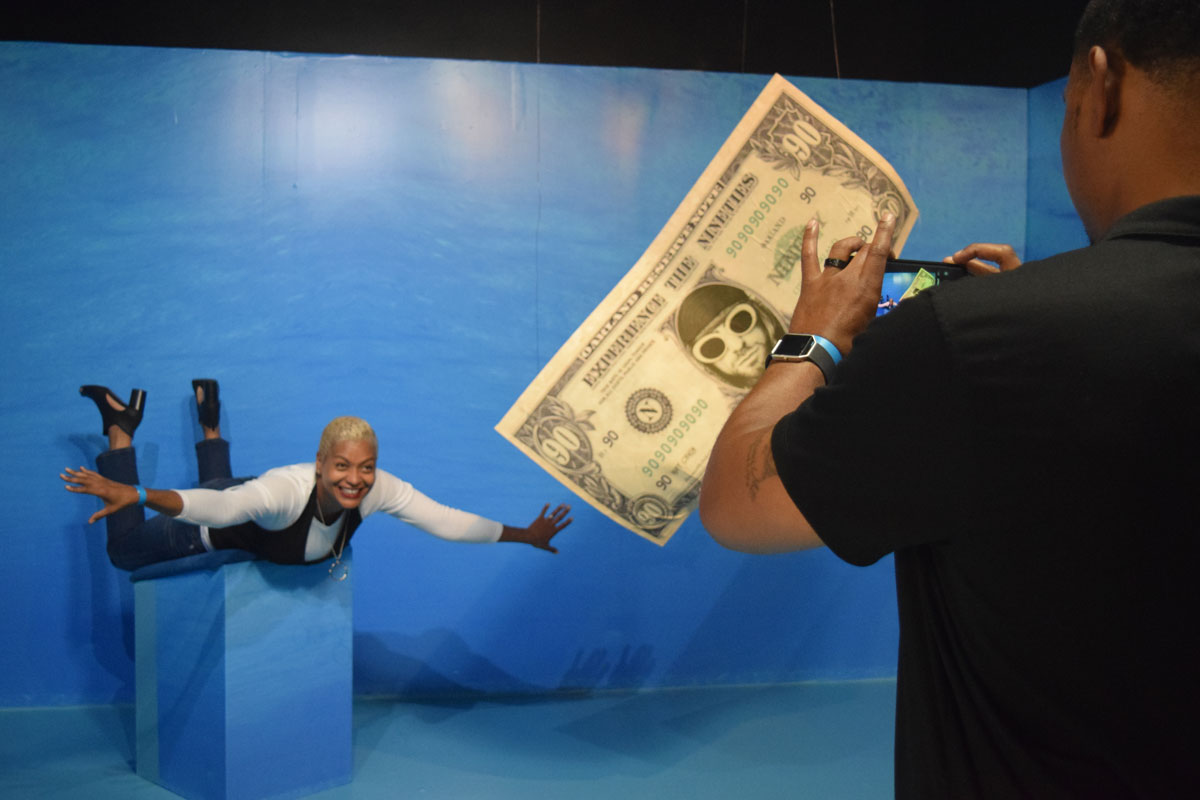
News isn’t fun, I get it. But culture doesn’t exist in a vacuum. Jurassic Park, Titanic and The Matrix can’t be reduced to the descriptor “iconic” without first understanding why they were such big hits—and that has a lot to do with the context in which they were made. But here they are now, along with Lisa Frank and Nirvana and giant boxes of cereal, unmoored and unmoving. Nineties culture gets trotted out as flattened simulations of things that were once very real and very meaningful, but are now simply meant to be photo opportunities captured at just the right angle.
What an experience.
